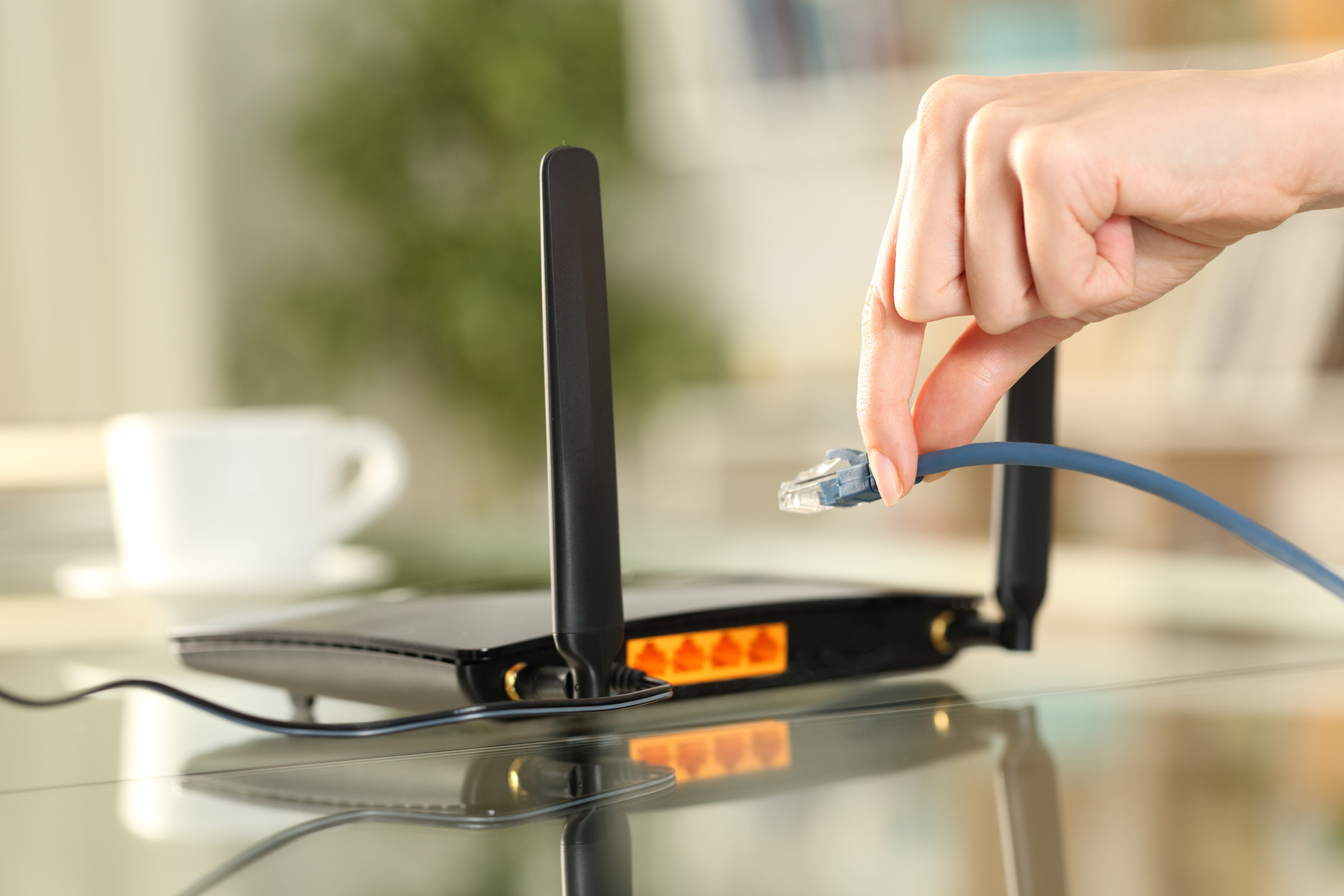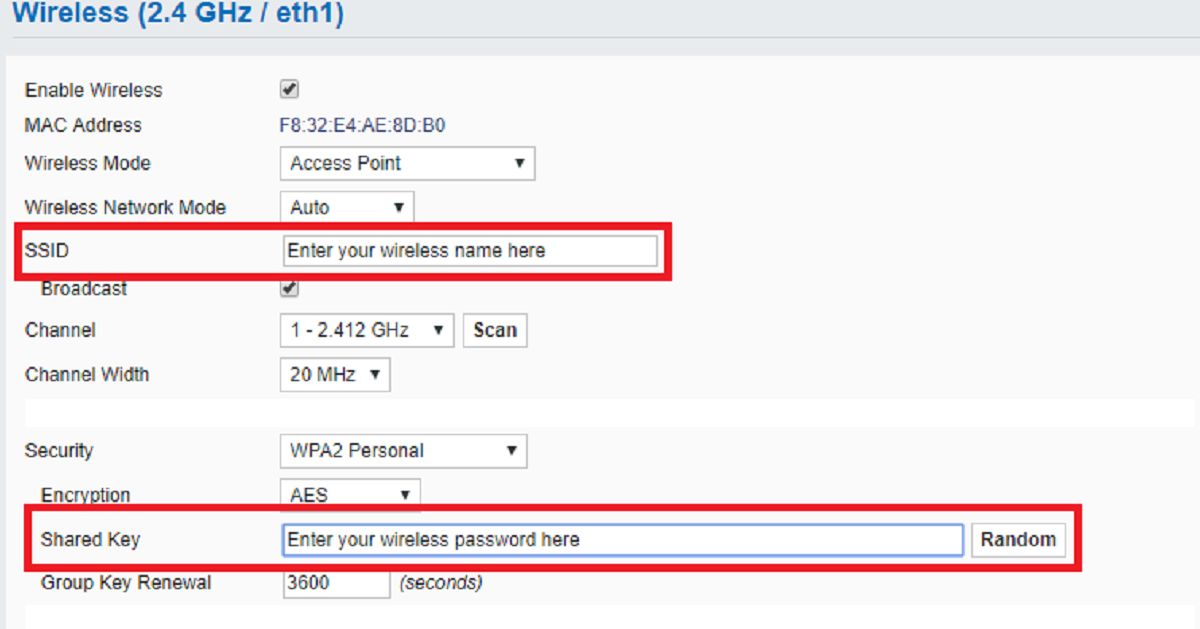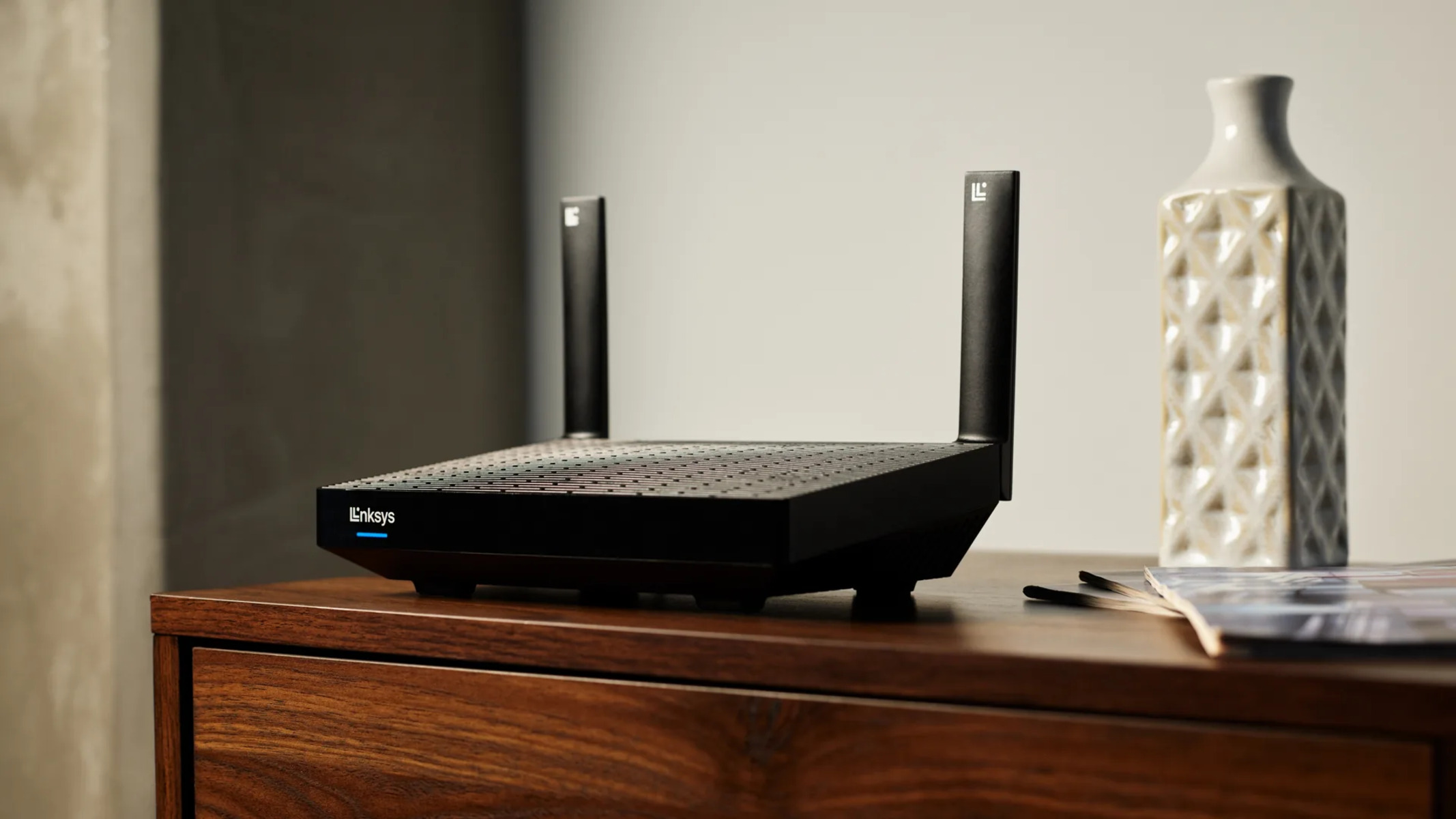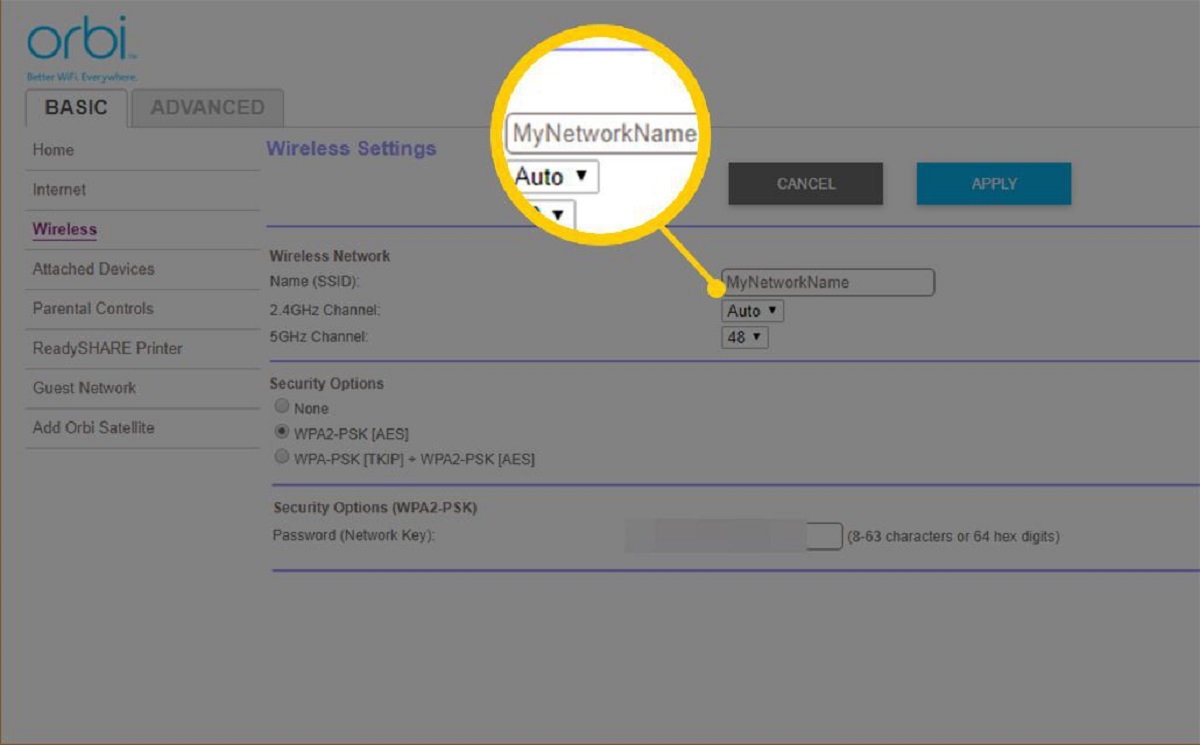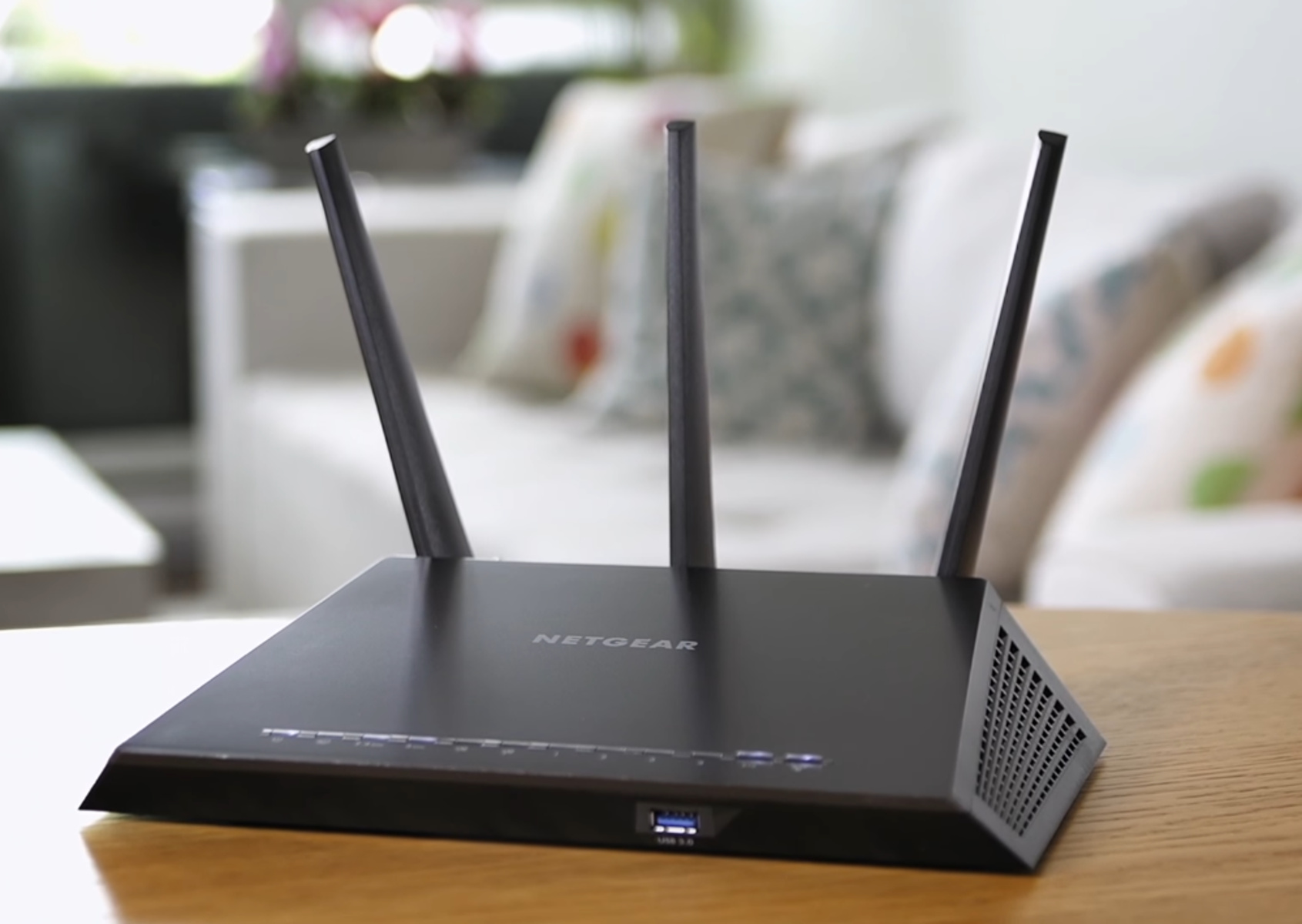Introduction
Welcome to the ever-evolving world of technology where wireless connectivity has become an indispensable part of our lives. Whether you’re at home, in the office, or at a local café, chances are you’re using a wireless router to connect to the internet. To establish a secure connection, you need to know certain technical details, including the Service Set Identifier (SSID) of your wireless router.
An SSID is a unique name that identifies your wireless network. It allows your devices to distinguish your network from others in the area. When setting up or troubleshooting your router, finding the SSID is essential. In this article, we will explore different methods to help you locate the SSID on your wireless router.
Before we dive into the methods of finding the SSID, it’s important to understand the significance of this information. Knowing the SSID is crucial for connecting your devices to a specific network, especially if you live in an area with multiple networks in proximity. For instance, in an apartment building, there may be several networks available, and identifying your SSID will ensure you connect to the correct one.
Furthermore, being aware of the SSID is essential for troubleshooting network issues. It enables you to verify your network’s availability and signal strength, allowing you to determine if the problem lies within your own network or elsewhere.
Now that we understand the importance of finding the SSID, let’s explore various methods that can help you locate it on your wireless router. Whether you’re a tech-savvy individual or a beginner in the world of networking, we’ve got you covered with different techniques to suit your expertise.
What is an SSID?
Before we delve into methods of finding the SSID on your wireless router, let’s understand what an SSID actually is. SSID stands for Service Set Identifier. It is a unique name assigned to your wireless network that allows devices to identify and connect to it.
Think of the SSID as the name of your network. It is essentially what distinguishes your network from others in your vicinity. When searching for available Wi-Fi networks on your device, you will see a list of SSIDs, which represent the various networks within range.
The SSID is not only important for connecting to your network, but it also plays a significant role in securing your connection. When setting up your wireless router, you can configure the SSID to make it visible or hidden. If you choose to hide the SSID, your network will not appear in the list of available networks, making it less likely to attract unauthorized users.
However, hiding the SSID does not provide foolproof security. Savvy individuals can still find hidden networks and attempt to gain unauthorized access. Therefore, it is essential to use strong and unique passwords for your wireless network to ensure maximum security.
Moreover, the SSID can also impact network performance. When multiple networks with the same or similar SSIDs exist in close proximity, it can lead to interference, causing slower speeds and connectivity issues. Therefore, choosing a unique and easily identifiable SSID can help mitigate this problem.
In addition to the SSID, your wireless router may also have a default network name assigned by the manufacturer. This default SSID is typically generic and may include the router’s brand or model number. It is recommended to change the default SSID to a personalized one that reflects your network’s identity and enhances security.
Now that we have a clear understanding of what an SSID is and its significance, let’s explore how to find the SSID on your wireless router using various methods.
Why do you need to find the SSID on your wireless router?
When it comes to connecting your devices to a wireless network, knowing the SSID of your router is crucial. Here are a few reasons why finding the SSID is essential:
1. Connecting your devices: The SSID acts as a unique identifier for your wireless network. When setting up a new device or reconnecting an existing one, knowing the SSID allows you to select the correct network and enter the required password. This ensures a seamless and secure connection between your device and the router.
2. Troubleshooting network issues: If you’re experiencing connectivity problems or slow internet speeds, finding the SSID can help in diagnosing and resolving the issue. By verifying that your device is connected to the correct network, you can eliminate any potential network mismatch problems and focus on other factors that may be causing the problem.
3. Network security: In order to secure your wireless network, it is important to change your SSID from the default name assigned by the router manufacturer. Using a unique and personalized SSID makes it harder for unauthorized users to identify your network and attempt to connect to it. By finding and changing your SSID, you enhance the overall security of your network.
4. Identifying your network in crowded areas: In locations such as apartment buildings, offices, or coffee shops, there may be multiple networks in close proximity. Knowing your SSID allows you to easily identify and connect to your own network, ensuring that you’re not accidentally connecting to someone else’s network or experiencing interference from neighboring networks.
5. Network management and customization: Finding the SSID gives you access to the router settings, where you can customize various network configurations. You can change the SSID to reflect your personal preferences or promote your brand for business networks. Additionally, you can enable or disable guest networks, adjust security settings, and manage connected devices.
In summary, finding the SSID on your wireless router is crucial for connecting your devices, troubleshooting network issues, enhancing network security, identifying your network in crowded areas, and managing network settings. By knowing your SSID, you can ensure a seamless and secure wireless connection for all your devices.
How to find the SSID on a wireless router
Now that we understand the importance of finding the SSID on your wireless router, let’s explore various methods to help you locate it:
1. Check the router label: The easiest way to find the SSID is to check the label on your wireless router. Many routers have a sticker on the back or bottom that displays important information, including the SSID. Look for a section labeled “Network Name” or “SSID” to find the name of your network.
2. Access the router settings: You can also find the SSID by accessing your router’s settings through a web browser. Connect your computer or mobile device to the router’s network, open a web browser, and enter the router’s IP address. This address is often printed on the router itself or provided in the manufacturer’s documentation. Once you access the router’s settings, navigate to the Wireless or Network settings, and look for the SSID field.
3. Use a network scanning tool: Network scanning tools can help you discover the SSIDs of nearby networks, including your own. There are various apps and software available for different devices that allow you to scan for Wi-Fi networks in your vicinity. Install a network scanning app on your smartphone or use software on your computer to scan for networks, and look for your SSID in the list of available networks.
4. Ask your Internet Service Provider (ISP): If all else fails, you can contact your Internet Service Provider (ISP) for assistance. They can provide you with the necessary information, including the SSID of your wireless router. You may need to provide them with your account details or answer security questions to verify your identity.
Remember to note down or memorize your SSID once you find it. It’s a good practice to keep this information handy for future reference, especially when connecting new devices or troubleshooting network issues.
With these methods at your disposal, you should be able to easily locate the SSID on your wireless router. Enjoy a seamless and secure wireless connection by ensuring that your devices are connected to the correct network.
Method 1: Check the router label
One of the simplest and most straightforward ways to find the SSID on your wireless router is by checking the router label. Many routers have a sticker on the back or bottom that provides important information about the device, including the SSID.
To locate the SSID using this method, follow these steps:
1. Locate your wireless router: Find the physical device that is responsible for providing your wireless network connection. It is typically a small box-like device with antennas.
2. Examine the router label: Look for a sticker or label on the back or bottom of the router. This label usually contains various details about the device, such as the model number, serial number, and important network settings.
3. Find the SSID information: Scan through the label until you find the section labeled “Network Name” or “SSID.” The SSID is the unique name given to your wireless network. It may be a combination of letters, numbers, or words.
4. Note down the SSID: Once you have located the SSID on the router label, make sure to note it down. You can write it down on a piece of paper, save it as a note on your smartphone, or enter it into a secure password manager. This will ensure that you have the SSID readily available when you need to connect new devices to your network.
Checking the router label is a quick and reliable method for finding the SSID. It eliminates the need to access the router settings or use additional tools. However, keep in mind that the router label may become worn or damaged over time, making it difficult to read the SSID. In such cases, you may need to resort to other methods to find the SSID.
Now that you know how to find the SSID by checking the router label, let’s explore other methods to locate the SSID on your wireless router.
Method 2: Access the router settings
If you’re unable to find the SSID on the router label or want to access additional network settings, you can find the SSID by accessing your router’s settings through a web browser. Here’s how to do it:
1. Connect to your router’s network: Ensure that your device is connected to the wireless network of your router. You can do this by going to your device’s Wi-Fi settings and selecting your router’s network from the list of available networks. Enter the network password if prompted.
2. Determine the router’s IP address: Open a web browser on your computer or mobile device and type the router’s IP address into the address bar. The IP address is often printed on the router itself or provided in the manufacturer’s documentation. Common router IP addresses include 192.168.0.1 or 192.168.1.1, but it may vary depending on the router model and configuration.
3. Log in to the router’s settings: Once you have entered the router’s IP address, press Enter. This will take you to the router’s login page. Enter the username and password for your router. If you haven’t changed the default login credentials, check the manufacturer’s documentation or search online for the default login information based on your router model.
4. Navigate to the wireless settings: After successfully logging in, you will be directed to the router’s settings interface. Look for the wireless settings or network settings section. The exact layout may vary depending on the router model, but you should be able to find the SSID listed there.
5. Locate the SSID: In the wireless settings section, you will find the SSID field, which displays the name of your network. Take note of the SSID or make any desired changes to it, such as changing it to a more personalized or memorable name.
6. Save the changes: Once you have located the SSID or made any desired changes, make sure to save the changes in the router’s settings interface. Look for a “Save” or “Apply” button, usually located at the bottom or top of the page. Click on it to save your settings.
By accessing your router’s settings, you can not only find the SSID but also customize other network configurations according to your preferences. Just remember to keep your login credentials secure and avoid making unnecessary changes that could potentially disrupt your network’s functioning.
Now that you know how to access the router settings to find the SSID, let’s explore another method to locate the SSID on your wireless router.
Method 3: Use a network scanning tool
If you’re unable to find the SSID on the router label or access the router settings, another method to locate the SSID on your wireless router is to use a network scanning tool. These tools allow you to scan for nearby Wi-Fi networks, including your own, and identify the SSIDs. Here’s how you can do it:
1. Install a network scanning tool: Look for a network scanning app or software that is compatible with your device. There are many options available for different operating systems, such as Wi-Fi Analyzer for Android or NetSpot for Windows. Install the network scanning tool from a trusted source, following the provided instructions.
2. Launch the network scanning tool: Open the network scanning tool on your device. Generally, these tools have a user-friendly interface that displays a list of available Wi-Fi networks in your vicinity.
3. Scan for Wi-Fi networks: Start the scanning process by initiating a Wi-Fi scan through the network scanning tool. This will search for all the Wi-Fi networks within range of your device, including your own network.
4. View the list of scanned networks: After the network scanning tool completes the scan, it will display a list of detected Wi-Fi networks. Look for your SSID in the list. The SSID is usually listed alongside other network details such as signal strength, security type, and channel number.
5. Identify your SSID: Locate your SSID in the list of scanned networks. It may be displayed as a name, a combination of letters or numbers, or a combination of both. Make note of the SSID or take a screenshot for future reference.
Using a network scanning tool can be particularly helpful if you’re in an environment with numerous Wi-Fi networks, like an apartment complex or office building. It allows you to easily identify your own SSID among the detected networks.
Keep in mind that network scanning tools may vary in terms of features and functionality, so it’s a good idea to explore the settings and options available within the application to customize the network scan according to your needs.
Now that we’ve explored how to use a network scanning tool to locate the SSID, let’s move on to the next method.
Method 4: Ask your Internet Service Provider (ISP)
If you are unable to find the SSID using other methods or if you’re facing difficulties, you can always reach out to your Internet Service Provider (ISP) for assistance. Your ISP will have the necessary information about your wireless router, including the SSID. Here’s how you can ask your ISP to provide you with the SSID:
1. Contact your ISP: Reach out to your Internet Service Provider through their customer support channels. This can usually be done through their website, customer service phone line, or online chat support. Follow the prompts or instructions to get in touch with a representative.
2. Verify your account: When contacting your ISP, you may need to provide them with account-related information to verify your identity. This could include your account number, service address, or security answer to specific questions associated with your account.
3. Request the SSID: Once you have established contact with a customer support representative, explain that you need assistance in obtaining the SSID for your wireless router. They should be able to provide you with the necessary information once your account has been verified.
4. Make a note of the SSID: As the customer support representative provides you with the SSID, make sure to write it down or type it into a secure document. This will ensure that you have the SSID readily available whenever you need to connect devices to your network.
Asking your ISP for the SSID is a reliable method, especially if you have trouble finding it through other means. The ISP is the provider of your internet service and has access to all the relevant information regarding your network settings.
Keep in mind that response times from ISPs may vary, so it’s a good idea to be patient and allow sufficient time for them to provide you with the information you need.
Now that we’ve explored various methods for finding the SSID on your wireless router, let’s summarize the steps and conclude our discussion.
Conclusion
Knowing how to find the SSID on your wireless router is essential for establishing a secure connection and managing your network settings. Whether you check the router label, access the router settings, use a network scanning tool, or ask your Internet Service Provider (ISP), each method provides a reliable way to locate the SSID.
The SSID, or Service Set Identifier, is the unique name assigned to your wireless network. It allows you to distinguish your network from others and connect your devices securely. By finding the SSID, you can ensure that you are connecting to the correct network, troubleshoot any connectivity issues, and enhance the security of your network.
Checking the router label is a convenient method, as it provides quick access to the SSID without requiring any technical knowledge. Accessing the router settings through a web browser allows for further customization of network settings and is particularly useful for tech-savvy individuals. Utilizing a network scanning tool helps in identifying the SSID in crowded areas or when the router label is not accessible. Lastly, reaching out to your ISP ensures accurate and up-to-date information about your network.
Regardless of the method you choose, make sure to note down the SSID for future reference and keep it in a secure place. This will simplify the process of connecting new devices to your network and troubleshooting any network-related issues that may arise.
Now that you are equipped with the knowledge of finding the SSID on your wireless router, you can confidently manage your network and enjoy a reliable and secure wireless connection.







